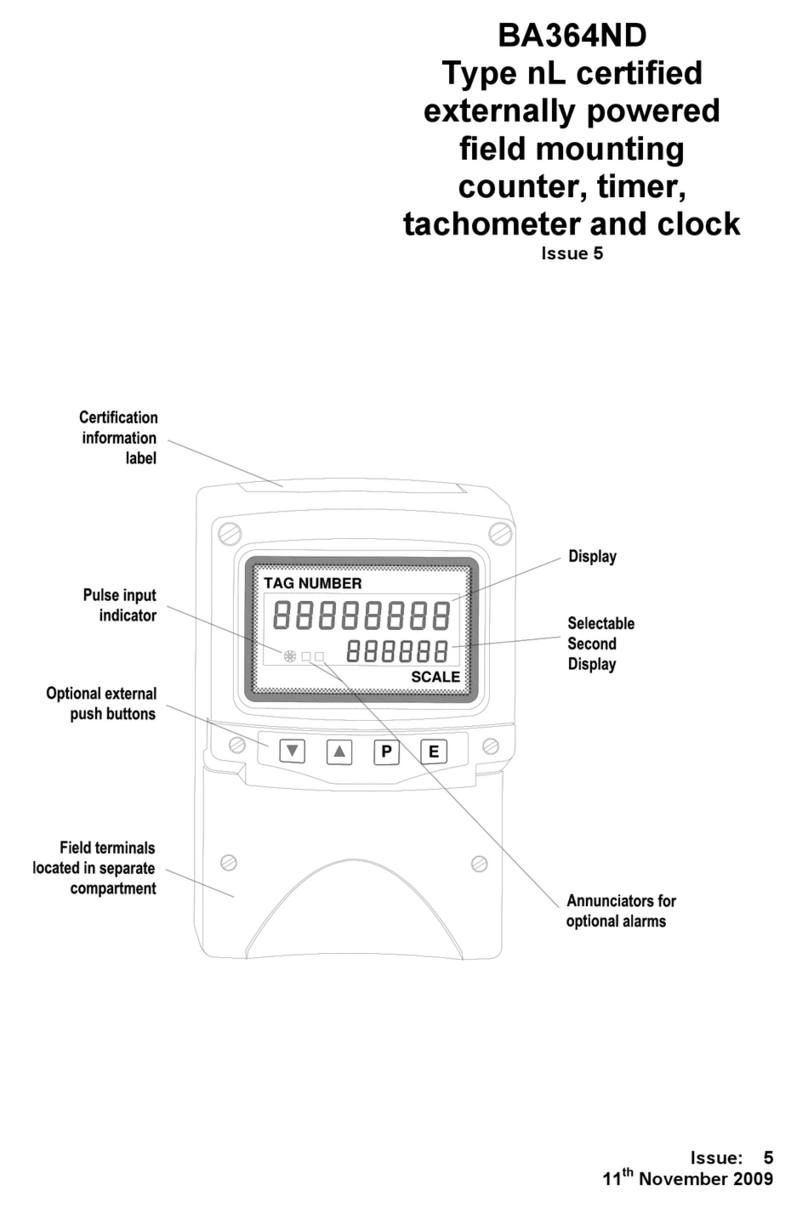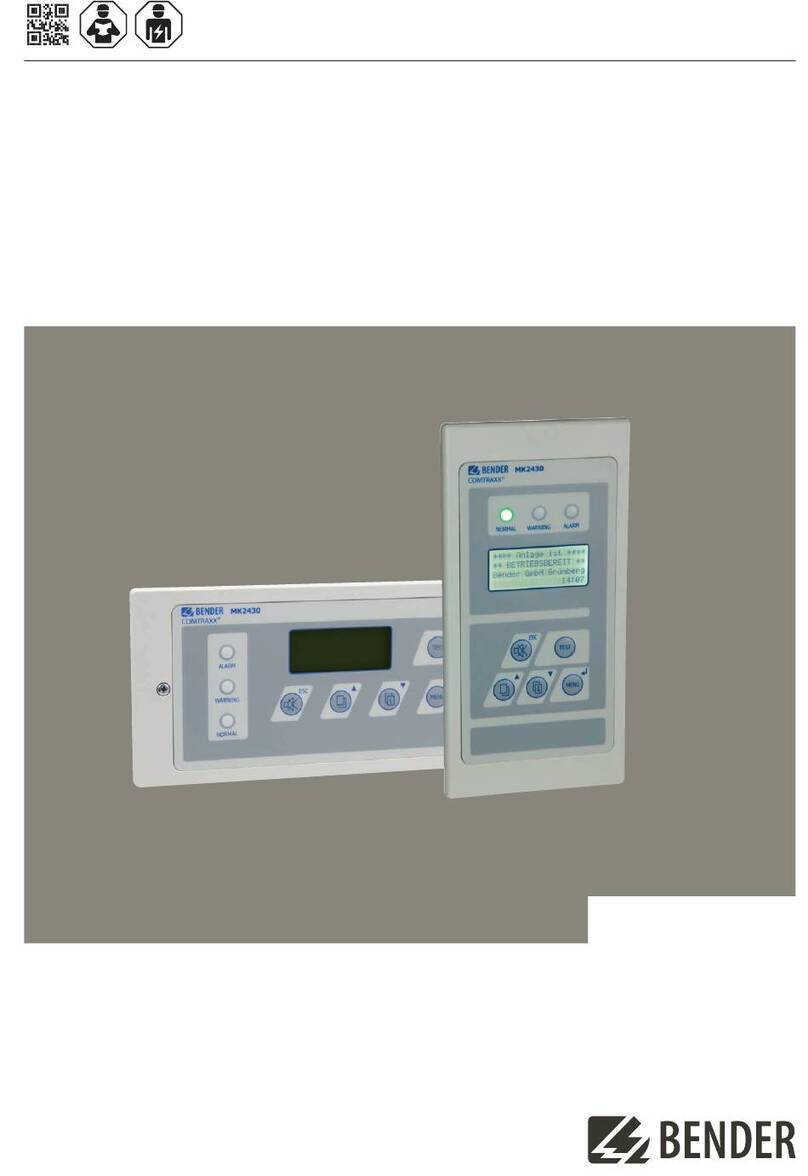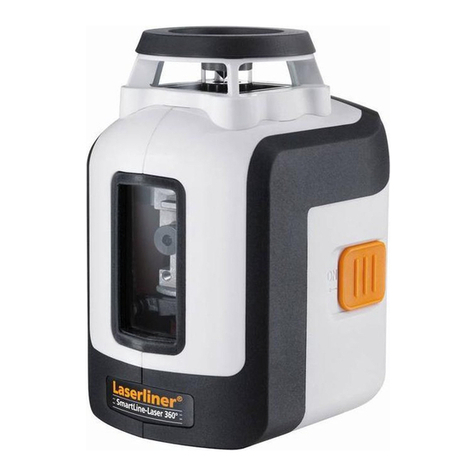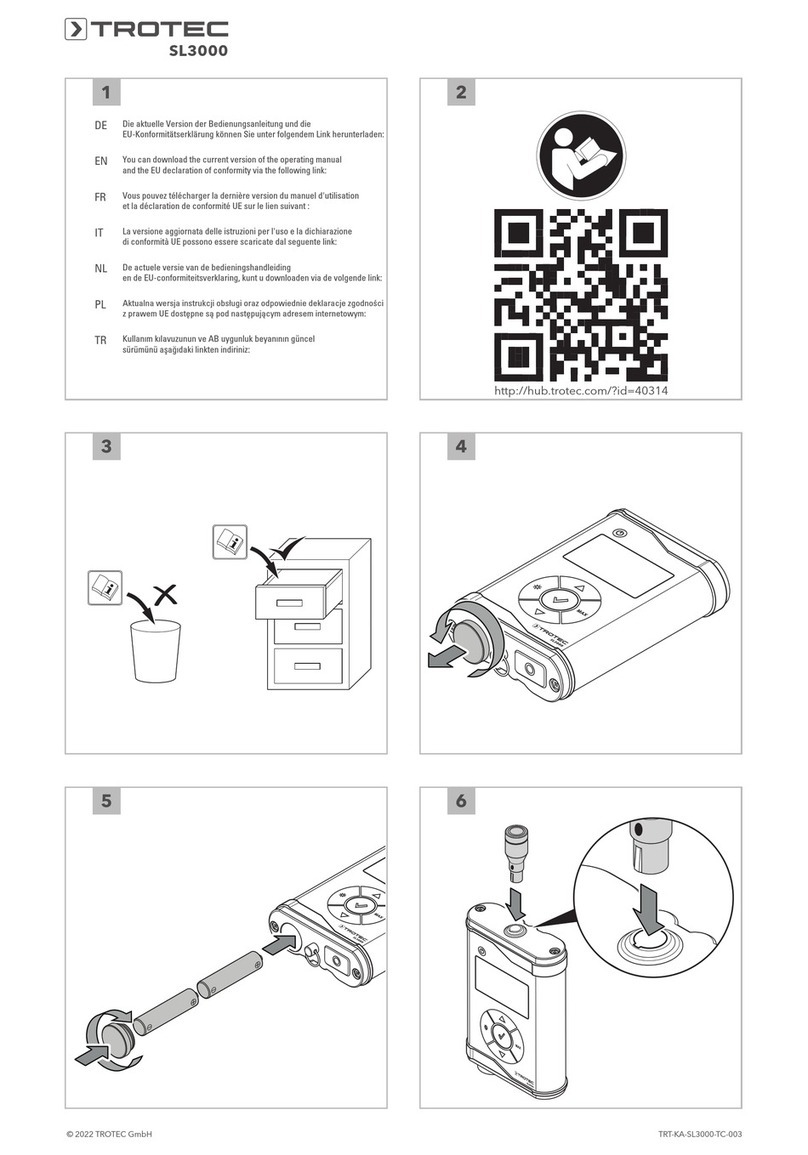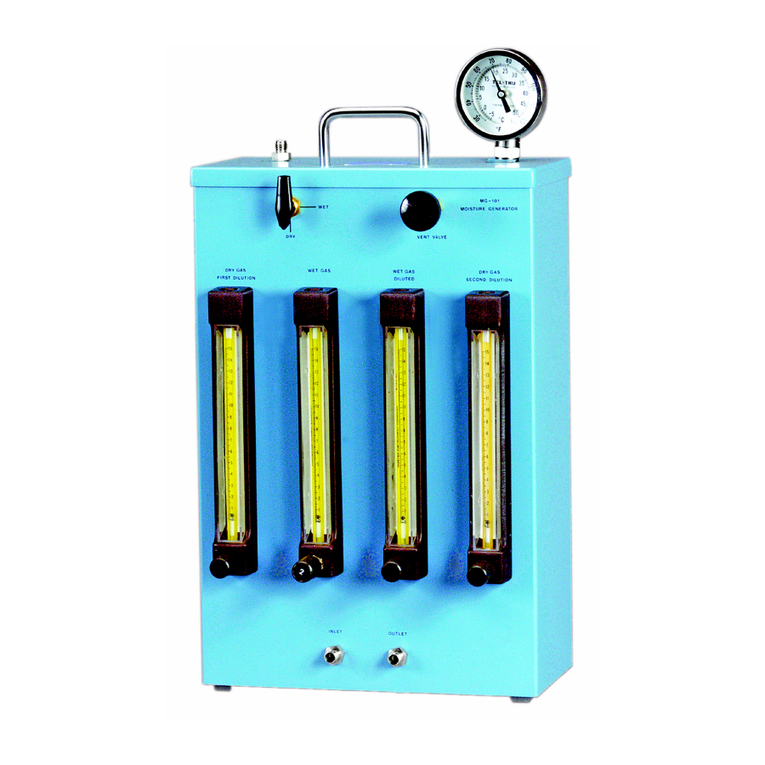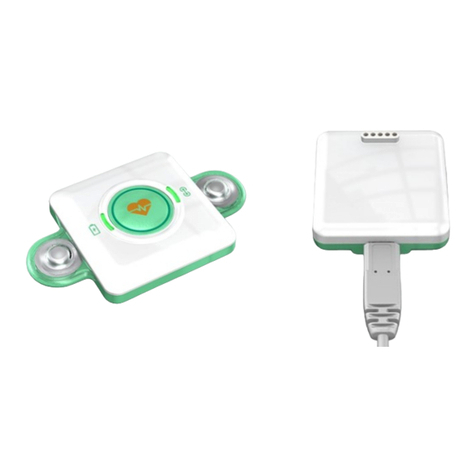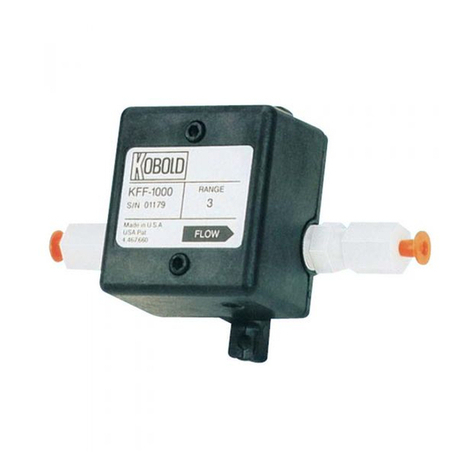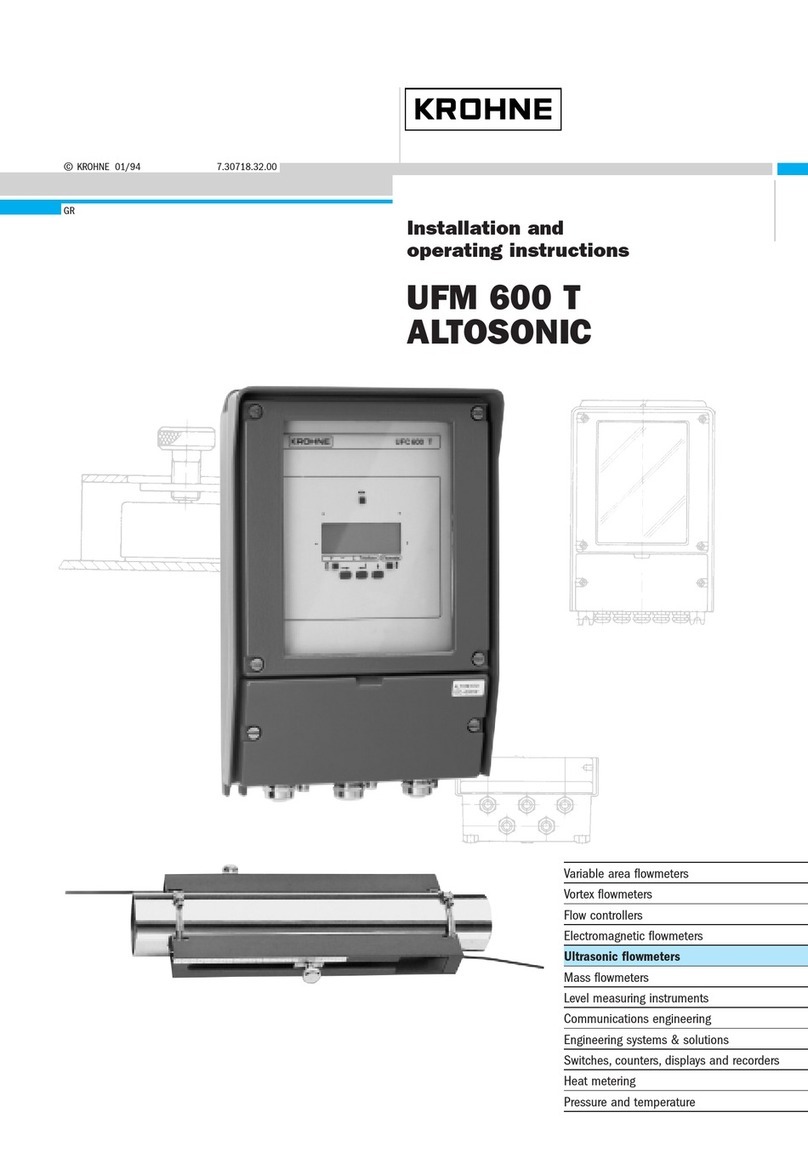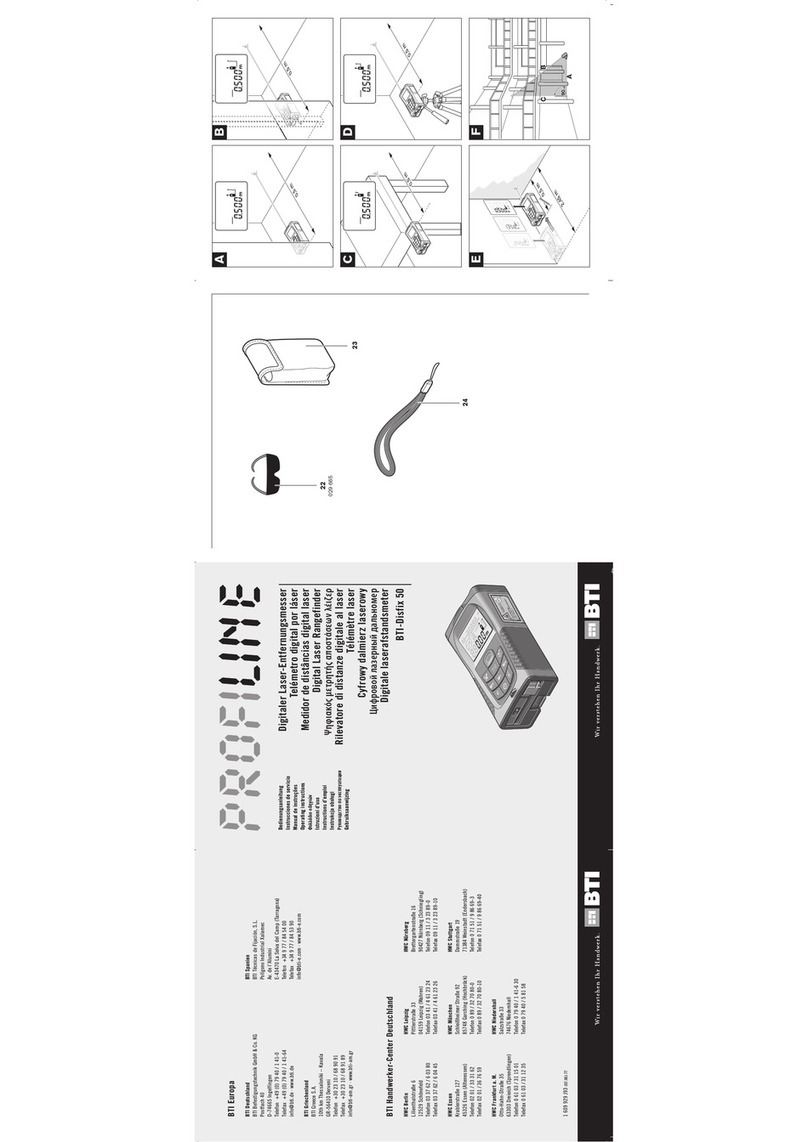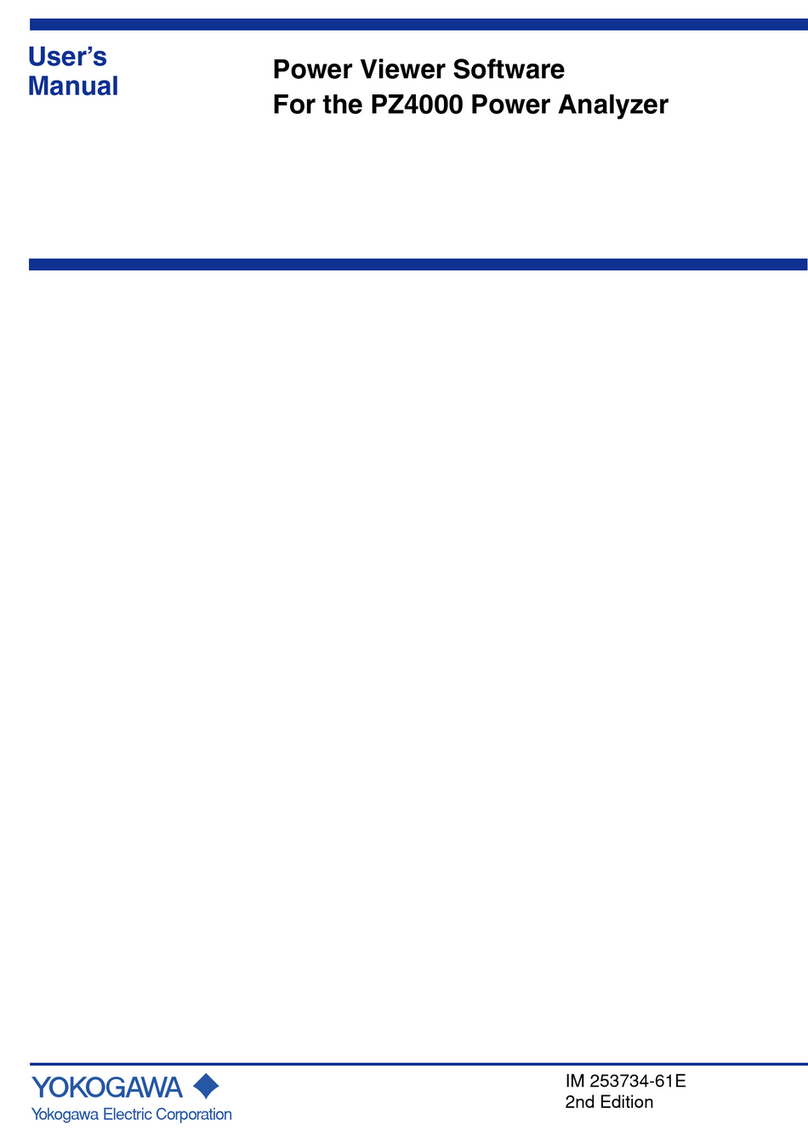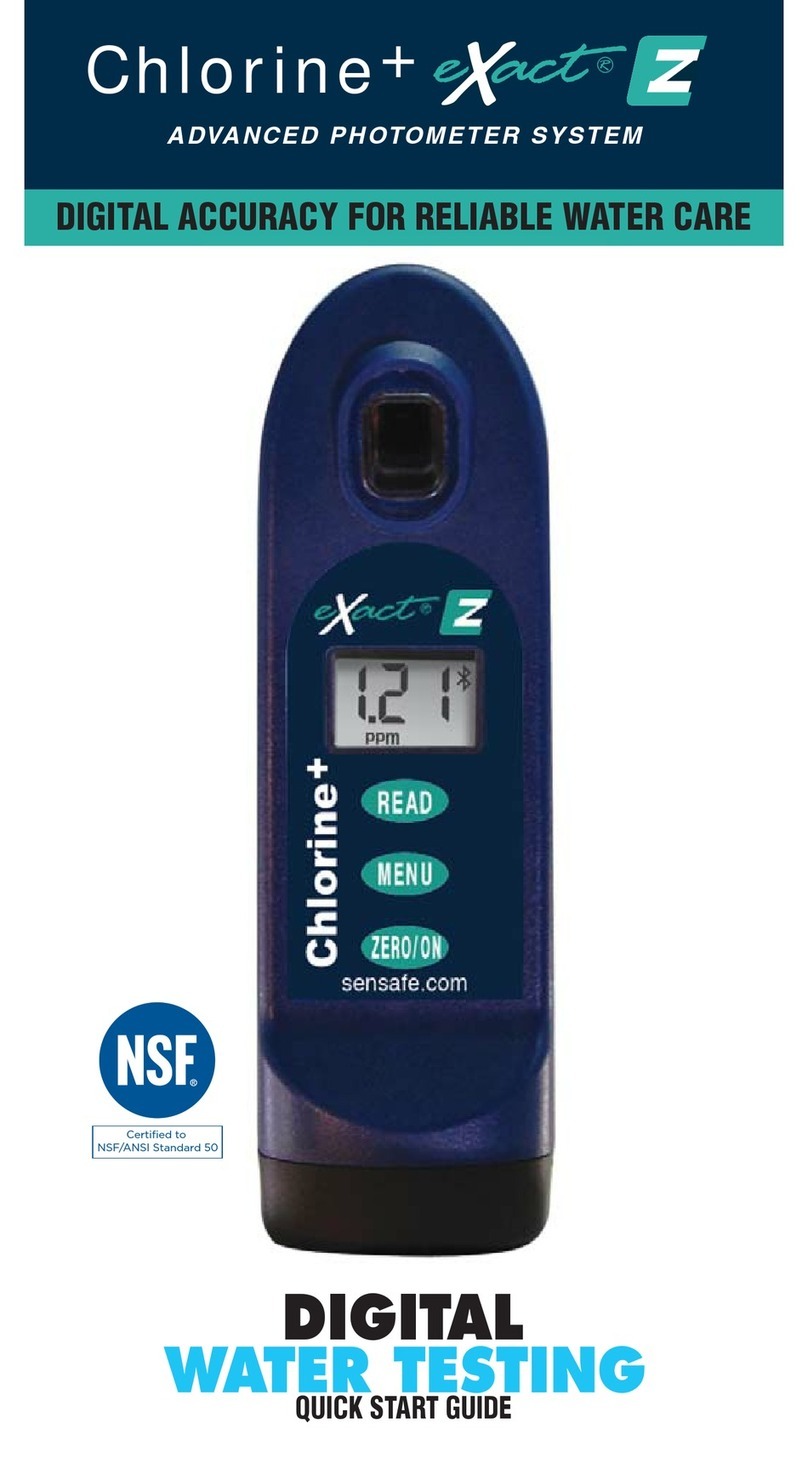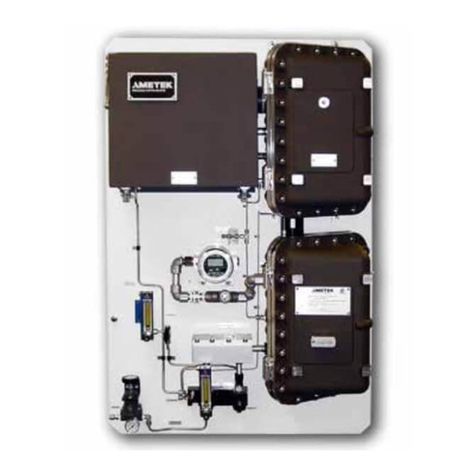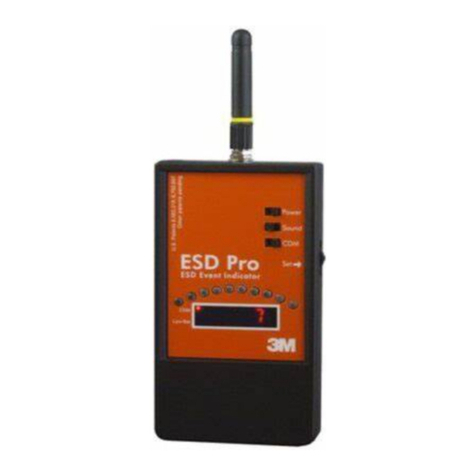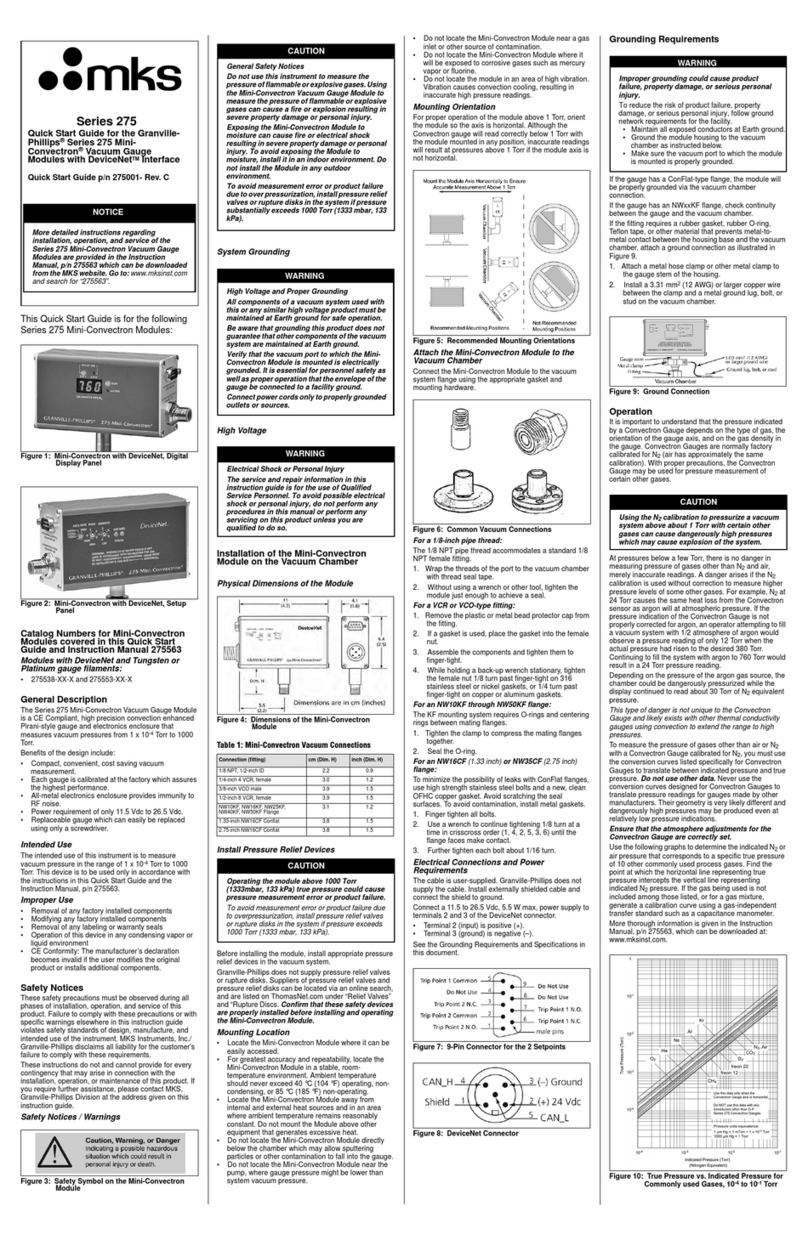Ex-baltic BA444DF-P PROFIBUS PA User manual

Issue: 2
23
rd
June 2011
BA444DF-P
PROFIBUS PA
Intrinsically safe
Field mounting
8 variable
Fieldbus Indicator
Issue 2

2
1. Description
1.1 Documentation
2. Operation
2.1 Error messages
3. Intrinsic Safety Certification
3.1 ATEX certificate
3.2 Zones, gas groups and T rating
3.3 Fieldbus connection
3.4 Certification Iabel Information
4. System Design for Hazardous Area
4.1 FISCO Systems
4.2 Non-FISCO Sysems
5. Installation
5.1 Location
5.2 Installation procedure
5.3 EMC
6. Configuration
6.1 Configuration menus
6.2 Node configuration menu
6.2.1 Enter fieldbus address
6.2.2 Access code
6.2.3 Change from node to listener
6.2.4 Reset to node factory defaults
6.3 Listener configuration menu
6.3.1 Access
6.3.2 Summary of configuration
functions.
6.4 Description of listener menu functions
6.4.1 Scan fieldbus segment
6.4.2 List configured input
parameters.
6.4.3 Enter address & display
parameters.
6.4.4 Enable selected input
6.4.5 Enter source address
6.4.6 Enter destination address
6.4.7 Enter Index
6.4.8 Decimal point position
6.4.9 Configuration of bargraph
6.4.10 Scale numeric display
6.4.11 Access code for listener
configuration menu.
6.4.12 Change from fieldbus listener to
fieldbus node.
6.4.13 Reset to listener factory
defaults.
7. Maintenance
7.1 Fault finding during commissioning
7.2 Fault finding after commissioning
7.3 Servicing
7.4 Routine maintenance
7.5 Guarantee
7.6 Customer comments
8. Accessories
8.1 Scale and Tag marking
8.2 Tag plate
8.3 Pipe mounting kits
Appendix 1
ATEX dust certification
Appendix 2
FM Approval for use in the USA and
cFM Approval for use in Canada.
Appendix 3
IECEx certification
CONTENTS
The BA444DF-P is CE marked to show compliance with the European Explosive Atmospheres
Directive 94/9/EC and the European EMC Directive 2004/108/EC

3
1. DESCRIPTION
The BA444DF-P fieldbus indicator is an
intrinsically safe, PROFIBUS PA instrument, that
may be configured as a fieldbus node or as a
fieldbus listener. It can display up to eight fieldbus
process variables on a five digit LCD and a 31
segment analogue bargraph. The instrument is
bus powered so no additional power supply is
required and has PROFIBUS PA User
Organisation approval, certificate Z01505.
Fieldbus node configuration may be performed by
either a User PRM data download or by a DPV1
configurator, and if required, the instrument
address may be entered via the front panel push
buttons.
When configured as a fieldbus listener, the
BA444DF-P is not visible to the fieldbus host and
can only be configured using the push buttons on
the front of the instrument.
Housed in a robust IP66 glass reinforced polyester
(GRP) enclosure with a toughened glass window,
the BA444DF-P is surface mounting, or may be
pipe mounted using one of the accessory kits.
The instrument is intrinsically safe and has been
certified by European Notified Body Intertek
Testing and Certification Ltd (ITS) to the ATEX
Directive 94/9/EC for use in explosive gas and
combustible dust atmospheres. ATEX dust
certification is an option – see Appendix 1.
For use in the USA and Canada, the BA444DF-P
is available with intrinsic safety and nonincendive
FM and cFM Approval – see Appendix 2.
For international applications, all versions of the
BA444DF-P PROFIBUS PA indicator have IECEx
intrinsic safety approval allowing installation in
explosive gas atmospheres. IECEx dust
certification is available as an option – see
Appendix 3.
The instrument’s communication protocol is shown
on a label inside the terminal cover. The ‘-P’ order
code suffix also indicates the protocol but is not
shown on the instrument certification label.
There is an alternative version of the fieldbus
display, order code BA444DF-F for use on
FOUNDATION™ fieldbus networks.
1.1 Documentation
This instruction manual describes ATEX system
design and installation of the BA444DF-P
PROFIBUS PA indicator.
System design information for non-ATEX and dust
approvals is shown in appendices to this manual.
2. OPERATION
The BA444DF-P indicator can display up to eight
pre-configured PROFIBUS PA process variables
designated in-1 to in-8. The operator can select
which variable is displayed using the ▼and ▲
push buttons which scroll the display through the
eight inputs. A numeric annunciator on the left
hand side of the display shows which of the eight
inputs is currently being displayed.
2.1 Error messages
‘no ConF’ No inputs have been
configured or are enabled.
‘no dAtA’ No data is being received
with the current configuration.
3. INTRINSIC SAFETY CERTIFICATION
3.1 ATEX certificate
The BA444DF-P has been issued with an EC-Type
Examination Certificate by Notified Body Intertek
Testing and Certification Ltd (ITS) confirming
compliance with the European ATEX Directive
94/9/EC for Group II, Category 1 gas
atmospheres, Ga Ex ia IIC T4 and for dust
atmospheres Ex iaD 20 T100ºC IP66. The
BA444DF-P is also FISCO compliant. The
instrument bears the Community Mark and, subject
to local codes of practice, may be installed in any
of the European Economic Area (EEA) member
countries. ATEX certificates are also acceptable
for installations in Switzerland.
This manual describes ATEX installations in
explosive gas atmospheres which conform with
EN 60079:Part 14 Electrical Installation in
Hazardous Areas. When designing systems for
installation outside the UK, the local Code of
Practice should be consulted.
For use in the presence of combustible dust,
please refer to Appendix 1 that describes ATEX
installations complying with EN 61241: Part 14.

4
3.2 Zones, gas groups and T rating
The BA444DF-P has been issued with EC Type
Examination certificate ITS06ATEX25313
confirming that it complies with the requirements
for Group II Category 1G Ga Ex ia IIC T4
Tamb = –40 to 70ºC specified in the ATEX
Directive. When connected to a suitable certified
system the BA444DF-P may be installed in:
Zone 0 explosive gas air mixture
continuously present.
Zone 1 explosive gas air mixture
likely to occur in normal
operation.
Zone 2 explosive gas air mixture not
likely to occur, and if it does will
only exist for a short time.
Be used with gases in groups:
Group A propane
Group B ethylene
Group C hydrogen
Having a temperature classification of:
T1 450ºC
T2 300ºC
T3 200ºC
T4 135ºC
At an ambient temperature between –40 & +70ºC.
Note: minimum guaranteed operating temperature
is –20ºC.
This allows the BA444DF-P PROFIBUS PA
indicator to be installed in all Zones and to be used
with most industrial gases.
3.3 Fieldbus connection
The BA444DF-P Indicator is powered and receives
data via the H1 fieldbus, which is connected to
terminals 1 and 2. These terminals are non-
polarised, comply with the Fieldbus Intrinsically
Safe Concept (FISCO) defined in IEC 60079 Part
27 and also have separate entity parameters as
shown below:
FISCO Entity
Ui = 17.5V dc 22.0V dc
Ii = 380mA dc 250mA dc
Pi = 5.32W 1.2W
The maximum equivalent capacitance and
inductance at terminals 1 & 2 is:
Ci = 0nF
Li = 8µH
3.4 Certification Label Information
The certification information label is fitted in a
recess on the top outer surface of the enclosure. It
shows details of the ATEX certification, a
statement that the instrument is a FISCO Field
Device, plus BEKA associates name and location.
IECEx approval information is also included. The
label for some versions of the instrument will also
contain non-European certification information.
The instrument serial number and year of
manufacture are recorded on a separate label
inside the terminal compartment.
4. SYSTEM DESIGN FOR HAZARDOUS
AREAS
4.1 FISCO Systems
The BA444DF-P PROFIBUS PA indicator may be
connected to any ATEX certified FISCO compliant
fieldbus segment, providing the segment can
supply the additional 13mA required to operate the
instrument.
Fig 1 shows a typical fieldbus segment. To comply
with FISCO requirements, the power supply,
terminators, field devices and the interconnecting
cables must conform with IEC60079 part 27.
Fig 1 FISCO fieldbus system

5
4.2 Non-FISCO Systems
For non-FISCO applications the BA444DF-P
PROFIBUS PA indicator has a higher voltage
entity intrinsic safety input parameter allowing
connection to a wide range of fieldbus segments.
The BA444DF-P may be connected to any
intrinsically safe segment providing:
The device powering the fieldbus segment is
ATEX certified and has output parameters
equal to or less than:
Uo = 22V dc
Io = 250mA dc
Po = 1.2W
The segment can provide an additional 13mA
to power the BA444DF-P PROFIBUS PA
indicator.
The equivalent internal capacitance Ci of the
BA444DF-P PROFIBUS PA indicator is zero and
the equivalent internal inductance is insignificant.
Therefore these BA444DF-P parameters do not
need to be considered.
5. INSTALLATION
5.1 Location
The BA444DF-P PROFIBUS PA indicator is
housed in a robust IP66 glass reinforced polyester
(GRP) enclosure incorporating an armoured glass
window and stainless steel fittings. It is suitable for
exterior mounting in most industrial environments,
including offshore and wastewater treatment
installations. Please consult BEKA associates if
high vibration is anticipated.
The BA444DF-P enclosure is surface mounting.
Accessory kits described in sections 8.3 of this
manual enable the instrument to be mounted onto
a vertical or horizontal pipe.
The field terminals and the two mounting holes are
located in a separate compartment with a sealed
cover allowing the instrument to be installed
without exposing the display assembly.
The BA444DF-P earth terminal is connected to the
carbon loaded GRP enclosure. If this enclosure is
not bolted to a post or structure connected to the
plant potential equalising network, the instrument’s
earth terminal should be connected to the
potential equalising network as recommenced in
EN 60079-14.
The BA444DF-P enclosure is supplied with a
bonding plate to ensure electrical continuity
between the three conduit / cable entries.
5.2 Installation Procedure
Fig 2 illustrates the instrument installation
procedure.
a. Remove the instrument terminal cover by
unscrewing the two captive 'A' screws.
b. Mount the instrument on a flat surface and
secure with two M6 screws through the 'B'
holes. Alternatively use one of the mounting
kits described in section 8.3
c. Remove the temporary dust seals from the
three cable entries and install the required
glands, conduit fittings or blanking plugs.
Note: The temporary dust seals fitted for
transit do not maintain the IP66 protection of
the BA444DF-P enclosure.
Cable glands, conduit fittings, blanking plugs
and cables must be suitable for continuous
use at the maximum operating temperature
of the instrument.
d. Connect the field wiring to the terminals as
shown in Fig 3.
e. Replace the instrument terminal cover and
evenly tighten the two 'A' screws.
Fig 2 BA444DF-P installation procedure

6
5.3 EMC
The BA444DF-P complies with the requirements of
the European EMC Directive 2004/108/EC. For
specified immunity, all wiring should be in
screened twisted pairs with the screens earthed at
one point in the safe area.
Fig 3 Dimensions and terminal connections
6. CONFIGURATION
The BA444DF-P 8 variable PROFIBUS PA PA
indicator may be configured as a fieldbus node or
as a fieldbus listener. When used as a fieldbus
node the indicator is configured via the fieldbus
host although the instrument address may be
entered via the front panel push buttons using the
menu shown in Fig 4. For detailed node
conditioning information please refer to the BEKA
PROFIBUS PA Display – Fieldbus Interface Guide
which may be downloaded from the BEKA website
www.beka.co.uk
As a fieldbus listener, the BA444DF-P is not visible
to the fieldbus host and can only be configured via
the front panel push buttons using the menu
shown in Fig 6.
Throughout this manual the four BA444DF-P push
buttons are identified P E ▼▲and legends
displayed by the instrument are shown within
inverted commas e.g. ‘CodE’ and ‘Enb’.
6.1 Configuration menus
The configuration menus are separated into two
sections, fieldbus node and fieldbus listener. Both
contain the ‘tYPE’ function that enables transfer
between the two. Unless otherwise requested
when ordered, all PROFIBUS PA BA444DF-P
instruments are supplied as a fieldbus node with
default configuration but can easily be reconfigured
on-site.
6.2 Node configuration menu
The node configuration menu is shown in Fig 4.
Access to the menu is obtained by operating the P
and Ebuttons simultaneously. If the BA444DF-P
is not protected by an access code the first
parameter 'Addr’ will be displayed. If the
instrument is protected by an access code, ‘CodE’
will be displayed first. Pressing Pwill allow the
four digit security code to be entered digit by digit
using the ▼or ▲button to adjust the flashing digit
and Pto move control to the next digit. When the
correct code has been entered, pressing Ewill
cause the first parameter ‘Addr’ to be displayed.
If an incorrect code is entered, or no button is
pressed for ten seconds, the BA444DF-P will
automatically return to the display mode.
6.2.1 Enter fieldbus address ‘Addr’
This function enables the fieldbus address of the
BA444DF-P to be entered via the push buttons.
Select ‘Addr’ in the node menu using the ▼or ▲
button and press Pto enter the function. This will
reveal the existing three digit decimal address with
the left hand digit flashing which may be changed
by operating the ▼or ▲button. When set as
required operating the Pbutton will transfer control
to the next digit that may be adjusted in the same
way. When all digits are set as required operating
the Ebutton will enter the new address and the
indicator will restart in the display mode after
completing the initialisation sequence. If the
address is not changed, operating the Ebutton will
return the display to the ‘Addr’ prompt in the node
configuration menu.
6.2.2 Access code for configuration menu
‘CodE’
Access to the node configuration menu may be
protected by a four digit security code which must
be entered to gain access. New instruments are
supplied configured with the default code 0000
which disables this protection and allows
unrestricted access to the configuration menu.

7
To enter a new access code select ‘CodE’ in the
node configuration menu by operating the ▼or ▲
button. To enter the function press Pwhich will
reveal the current access code with one digit
flashing. The code may be changed using the ▼or
▲button to adjust the flashing digit and the P
button to move control to the next digit. When the
required code has been selected, press Eto enter
the selection and return to the ‘CodE’ prompt in the
configuration menu. The revised access code will
be activated when the transmitter is returned to the
display mode.
If the access code is lost please contact BEKA
associates.
6.2.3 Change from node to listener ‘tYPE’
This function enables the instrument to be
changed from a fieldbus node to a fieldbus listener.
Select ‘tYPE’ in the node configuration menu using
the ▼or ▲button. To enter the function press P
which will show that the instrument is configured
as a fieldbus node, to change to a fieldbus listener
press the ▼or ▲button which will toggle the
display to ‘LStnr’ To prevent accidental changes
this request must be confirmed by operating the P
button and entering ‘5urE’. The instrument will
display ‘0000’ with the first digit flashing, using the
▼or ▲button set the flashing digit to ‘5’ and press
the Pbutton to move control to the next digit which
should be set to ‘u’. When the four letters of ‘5urE’
have been entered, operating the Ebutton will
cause the instrument to restart as a fieldbus
listener in the display mode.
CAUTION
All the instrument’s node configuration
information will be lost when it is
changed from a fieldbus node to a
fieldbus listener.
Please refer to the quick set-up procedure in the
BEKA PROFIBUS PA Display – Fieldbus Interface
Guide.
6.2.4 Reset the instrument to node factory
defaults ‘rESEt’
The BA444DF-P may be reset to the factory
defaults that are shown below:
Security Code 0000 (disabled)
Device address 126
For each of the eight inputs:
Decimal point XXX.XX
Bar Type Left
Bar lower limit 0.0
Bar Upper limit 100.0
Gain 1.0
Offset 0.0
To reset the BA444DF-P select ‘rESEt’ in the
configuration menu by operating the ▼or ▲
button. To enter the function press Pwhich will
reveal ‘0000’ with the left hand digit flashing. To
prevent accidental use of this function, ‘5urE’ must
be entered to confirm that the instrument is to be
reset.
Using the ▼or ▲button set the flashing digit to ‘5’
and press the Pbutton to move control to the next
digit which should be set to ‘u’. When the four
letters of ‘5urE’ have been entered operating the E
button will reset the BA444DF-P to the factory
defaults. Any existing configuration and
addresses will be lost when the instrument is reset.
FIG 4 Node configuration menu

8
6.3 Listener configuration menu
When used as a fieldbus listener the BA444DF-P
is not visible to the fieldbus host and can only be
configured using the front panel push buttons
shown in Fig 3.
The listener configuration menu is separated into
three sections, ‘SCAn’, ‘LISt’ and ‘Edit’, plus three
housekeeping functions ‘CodE’, ‘tYPE’ and ‘rESEt’
as shown in Fig 6.
‘SCAn’ is the simplest method of configuration if
the addresses of the data sources to be displayed
by the BA444DF-P listener are not known.
In the ‘SCAn’ function pressing the Pbutton
causes the BA444DF-P listener to search the
fieldbus segment to which it is connected for all
data sources. The hexadecimal device
addresses for each data source are displayed as
shown in Fig 5.
The ▼and ▲push buttons scroll the display
through all the data sources on the segment
showing the source and destination address for
each one. To aid identification, operating the P
button will preview the value of the data at the
selected addresses with a zero index i.e. the first
five bytes in the data string. If the format of the
data is not DS-33 (status + float) ‘no dAt’ will be
displayed. The selected source and destination
addresses may be allocated to one of the eight
BA444DF-P listener inputs in-1, to in-8. Operating
the Pbutton will reveal the current listener input
which may be changed using the ▼or ▲push
button, when set as required, operating the Epush
button will enter the allocation. If the process
variable to be displayed is located further along the
data stream i.e. has an index greater than 5, the
required index must be entered via the index ‘ind’
function in the edit sub-menu.
A worked configuration example illustrating this
procedure is contained in the Quick Set-up section
of the PROFIBUS PA Interface Guide.
Fig 5 Device Addresses
If the source and destination addresses and index
of the process variable to be displayed by the
BA444DF-P listener are known, they may be
directly entered via the edit sub-menu. This sub-
menu also provides full control of both the numeric
and bargraph display parameters.

9

10
6.3.1 Access
Access to the listener configuration menu is
obtained by operating the Pand Ebuttons
simultaneously. If the BA444DF-P listener
configuration menu is not protected by an access
code the first parameter 'SCAn’ will be displayed.
If the BA444DF-P is protected by an access code,
‘CodE’ will be displayed first. Pressing Pwill allow
the four digit security code to be entered digit by
digit using the ▼or ▲button to adjust the flashing
digit and Pto move control to the next digit. When
the correct code has been entered, pressing Ewill
cause the first parameter ‘SCAn’ to be displayed.
If an incorrect code is entered, or no button is
pressed for ten seconds, the indicator will
automatically return to the display mode.
Section 6.3.2 contains a summary of each
configuration function including a cross reference
to a more detailed description.
6.3.2 Summary of listener configuration
functions
Instrument Summary
display of function
‘SCAn’ Scan fieldbus segment
Identifies all data sources on the
fieldbus segment to which the listener is
connected and enables selected data to
be allocated to one of the eight listener
inputs in-1 to in-8.
See section 6.4.1
‘LiSt’ List configured input parameters
For each of the eight BA444DF-P
listener inputs, in-1 to in-8 shows if the
input is enabled, Source Address,
Destination Address and the Index
which have been allocated.
Parameters can not be changed from
within this function.
See section 6.4.2
‘Edit’ Enter addresses and display
parameters
Sub-menu which allows known fieldbus
device addresses to be entered and all
display parameters adjusted for each of
the eight fieldbus listener inputs.
See section 6.4.3
‘Enb’ Enable selected input
Enables each of the eight
listener inputs in-1 to in-8 to
be enabled or disabled
without affecting any
parameters.
See section 6.4.4
‘SrC’ Enter Source Address
Allows hexadecimal fieldbus
device source address for
each of the eight listener
inputs in-1 to in-8 to be
entered.
See section 6.4.5
‘dSt’ Enter Destination Address
Allows hexadecimal fieldbus
device destination address for
each listener input in-1 to in-8
to be entered.
See section 6.4.6
‘ind’ Enter Index
Allows hexadecimal index for
specified fieldbus source
address to be entered for
each listener input in-1 to in-
8.
See section 6.4.7
‘dP’ Decimal point position
Defines position of displayed
decimal point for each listener
input in-1 to in-8.
See section 6.4.8
‘bAr’ Configuration of bargraph
Defines the bargraphs
justification and the digital
display at which the bargraph
is zero and full scale for each
listener input in-1 to in-8.
See section 6.4.9
‘SCALE’ Scale numeric display
Applies zero offset and scale
factor to the numeric display
for each listener input in-1 to
in-8.
See section 6.4.10
‘CodE’ Access code for listener
configuration menu
Enters a four digit security access
code for configuration menu. Default
code 0000 disables this function.
See section 6.4.11
‘tYPE’ Change from listener to node
Enables the instrument to be
conditioned as a fieldbus listener or a
fieldbus node.
See section 6.4.12
‘rESEt’ Reset to listener factory defaults
Returns the BA444DF-P listener to
factory defaults.
See section 6.4.13

11
6.4 Description of listener menu functions
This section contains a detailed description of each
function in the listener configuration menu. It
should be read in conjunction with Fig 6.
6.4.1 Scan fieldbus segment ‘SCAn’
If the Device Addresses of a data source are not
known, the ‘SCAn’ function provides a simple way
to identify them. This function scans the fieldbus
segment to which the BA444DF-P listener is
connected and identifies all the data sources. To
aid identification the value of the process variable
with a zero index i.e. the first five bytes in the data
string at the address may be pre-viewed.
The BA444DF-P listener only supports DS-33
formatted data (status+float) which is the usual
format for analogue process variables. The
‘SCAn’ function will identify, irrespective of format,
all data sources on the segment whose destination
address is five bytes long. When pre-viewed, non
DS-33 formatted data will produce a ‘no dAt’ error
message.
‘SCAn’ is the first function displayed when entering
the configuration menu, or it may be selected from
within the menu by operating the ▼or ▲button.
To scan the fieldbus segment to which the listener
is connected for all data sources press Pwhich will
reveal the hexadecimal source address and
destination address of the first data source found
as shown in Fig 5. If there is more than one data
source, operating the ▼or ▲button will scroll
though all of them.
If there are no data sources on the fieldbus
segment the BA444DF-P listener will display
‘noSrC’.
When the source and destination addresses of a
data source are displayed, to aid identification the
value of the process variable with a zero index i.e.
the first five bytes in the data string may be pre-
viewed by operating the Pbutton. If this confirms
that it is the required address, it may be allocated
to one of the eight BA444DF-P listener inputs in-1
to in-8. To select the required listener input, press
Pwhich will display the first input in-1. Operating
the ▼or ▲button will scroll the display through
the other inputs. When the required input is
displayed pressing Ewill allocate the selected data
source address to the selected input and return the
display to the source and destination addresses
from which another data source address may be
selected. When a data source address is allocated
to a listener input any previous allocation will be
overwritten.
If the required process variable has an index
above 5 i.e. it is not the first five bytes in the data
string, the required index should be entered via the
‘ind’ function in the Edit sub-menu which is
described in section 6.4.7
6.4.2 List configured input parameters ‘LiSt’
The ‘LiSt’ function enables the Source Address,
Destination Address and Index allocated to each
listener input to be viewed without danger of it
being accidentally changed.
The ‘LiSt’ function may be selected from within the
menu by operating ▼or ▲button. To enter the
function press Pwhich will display the listener
input currently selected in the display mode, other
inputs may be selected using the ▼or ▲button.
Operating the Pbutton will cause the following
parameters for the selected input to be displayed
sequentially:
Display Explanation
‘Enb:Y or N’ Input Enabled yes or no
‘SrC:00’ Source Address
‘dSt :00’ Destination Address
‘ind :00’ Index
The display then automatically returns to the
selected BA444DF-P listener input from where
another input may be selected.
If one of the eight BA444DF-P Listener’s inputs in-
1 to in-8 has not had a Source Address,
Destination Address and Index allocated to it, ‘LiSt’
will show both addresses as ‘FF’ and the index
‘ind’ as ‘00’.
6.4.3 Enter address & display parameters
‘Edit’
The ‘Edit’ sub-menu may be selected from within
the menu by operating ▼or ▲button. To enter the
function press Pwhich will display the listener
input currently selected in the display mode, other
listener inputs may be selected using the ▼or ▲
button. When the required input has been
selected operating the Pbutton will enter the edit
sub-menu at ‘Enb’ for the selected input.
6.4.4 Enable selected input ‘Enb’
‘Enb’ turns the listener input selected in the Edit
function on or off without affecting the conditioning.
To enter the function press Pwhich will reveal
whether the selected input is ‘on’ or ‘oFF’.
Operating the ▼or ▲buttons will toggle between
the two conditions. When set as required
operating the Ebutton will enter the selection and
return to the ‘Enb’ prompt in the edit sub-menu.

12
6.4.5 Enter source address ‘SrC’
This function allows a known fieldbus device
source address to be entered and allocated to the
listener input selected in the edit function. To enter
the function press Pwhich will reveal the existing
two digit hexadecimal address with one digit
flashing which may be changed by operating the ▼
or ▲button. When set as required operating the
Pbutton will transfer control to the second digit
that may be adjusted in the same way. When both
digits are set as required operating the Ebutton
will enter the selection and return to the ‘SrC’
prompt in the edit sub-menu.
6.4.6 Enter destination address ‘dSt’
This function allows a known fieldbus device
destination address to be entered and allocated to
the listener input selected in the Edit function. To
enter the function press Pwhich will reveal the
existing two digit hexadecimal address with one
digit flashing which may be changed by operating
the ▼or ▲button. When set as required operating
the Pbutton will transfer control to the second digit
that may be adjusted in the same way. When both
digits are set as required operating the Ebutton
will enter the selection and return to the ‘dSt’
prompt in the edit sub-menu.
6.4.7 Enter Index ‘ind’
Index defines the location of the required process
variable in the data string. The ‘ind’ function allows
a known Index for the selected fieldbus Source
Address to be entered and allocated to the
BA444DF-P listener input selected in the Edit
function. The data location is manufacturer specific
and can not be automatically determined; the
device documentation should therefore be
consulted. To enter the function press Pwhich will
reveal the existing two digit hexadecimal address
with one digit flashing which may be changed by
operating the ▼or ▲button. When set as required
operating the Pbutton will transfer control to the
second digit that may be adjusted in the same
way. When both digits are set as required
operating the Ebutton will enter the selection and
return to the ‘ind’ prompt in the edit sub-menu.
6.4.8 Decimal point position ‘dP’
This defines the position the decimal point in the
numeric display. To enter the function press P
which will reveal the existing decimal point
position. Operating the ▼or ▲button will move
the decimal point to the required position, omit it,
or activate all the decimal points which
automatically provides maximum resolution in the
display mode irrespective of the numeric value.
When positioned as required, operating the E
button will enter the selection and return to the ‘dP’
prompt in the edit sub-menu.
6.4.9 Configuration of bargraph display ‘bAr’
This function contains three sub-functions that
enable the bargraph, justify its position and define
the relationship between the bargraph and the
instrument’s numeric display.
Sub-function ‘b.tYPE’ enables the bargraph to be
left, centre or right justified, or to be turned off.
Sub-functions ‘bArLo’ and ‘bArhi’ define the
listener’s numeric display at which the bargraph
starts and is at full scale.
The ‘bAr’ function may be selected from within the
edit sub-menu by operating the ▼or ▲button.
To enter the function press Pwhich will display the
‘b.tYPE’ sub-function, pressing Pagain will reveal
the existing bargraph justification. The ▼or ▲
button will scroll through the four options, when the
required justification is displayed, pressing Ewill
enter the selection and return the display to the
‘b.tYPE’ prompt in the edit sub-menu from which
‘bArLo’ may be selected using the ▼or ▲button.
‘bArLo’ defines the listener’s numeric display at
which the bargraph starts, to enter the function
press Pwhich will reveal the existing setting. The
display may be changed using the ▼or ▲button
to adjust the flashing digit and the Pbutton to
move control to the next digit. When the required
starting display has been selected, press Eto
return to the ‘bArLo’ prompt in the edit sub-menu
from which the ‘bArHi’ function may be selected.
‘bArHi’ defines the listener’s numeric display at
which the bargraph is full scale, to enter the
function press Pwhich will reveal the existing
setting. The display may be changed using the ▼
or ▲button to adjust the flashing digit and the P
button to move control to the next digit. When the
required display has been selected, press Etwice
to enter the new values and return to the ‘bAr’
prompt in the edit sub-menu.
Note: If the ‘dP’ function has been set to provide
automatic maximum resolution irrespective of the
displayed value, it may be necessary to manually
position the decimal point before adjusting ‘bArLo’
or ‘bArHi’. This can be achieved by repeatedly
operating the Pbutton until the activated decimal
point flashes, the decimal point can then be
positioned using either the ▼or ▲button.
Pressing the Pbutton again will return control to
one of the digits.
6.4.10 Scale numeric display ‘SCALE’
A scaling factor ‘Gain’ and an offset ‘oFFSt’ may
be applied to the fieldbus process variable using
this function, thus allowing the listener to display
the fieldbus process variable in alternative units.

13
The ‘SCALE’ function may be selected from within
the edit sub-menu by operating the ▼or ▲button.
To enter the function press Pwhich will display the
‘GAin’ sub-function, pressing Pagain will reveal
the existing gain with one digit flashing. This
flashing digit may be changed by operating the ▼
or ▲ button; when adjusted the Pbutton will move
control to the next digit or to the decimal point
which can be positioned using the ▼or ▲button.
When ‘GAin’ has been set to the required value
operating the Ebutton will enter the selection and
return to the ‘GAin’ prompt in the sub-menu from
where the ‘oFFSt’ function can be selected using
the ▼or ▲button.
To enter the ‘oFFSt’ function press Pwhich will
reveal the existing offset with one digit flashing.
Again the flashing digit may be changed by
operating the ▼or ▲button and the Pbutton will
move control to the next digit or to the decimal
point. When ‘oFFSt’ has been set to the required
value operating the Ebutton will enter the selection
and return to the ‘oFFSt’ prompt in the sub-menu.
Three operations of the Ebutton will return to the
‘Edit’ function in the main configuration menu.
6.4.11 Access code for listener configuration
menu ‘CodE’
Access to the listener configuration menu may be
protected by a four digit security code which must
be entered to gain access. New instruments are
supplied configured with the default code 0000
which disables this protection and allows
unrestricted access to the configuration menu.
To enter a new access code select ‘CodE’ in the
configuration menu by operating the ▼or ▲
button. To enter the function press P,this will
reveal the current access code with one digit
flashing. The code may be changed using the ▼or
▲button to adjust the flashing digit and the P
button to move control to the next digit. When the
required code has been selected, press Eto enter
the selection and return to the ‘CodE’ prompt in the
configuration menu. The revised access code will
be activated when the transmitter is returned to the
display mode.
If the access code is lost please contact BEKA
associates.
6.4.12 Change from fieldbus listener to
fieldbus node ‘tYPE’
This function enables the BA444DF-P to be
conditioned as a fieldbus node or as a fieldbus
listener. To change the function of the instrument
select ‘tYPE’ in the listener configuration menu
using the ▼or ▲button and press Pto enter
which will show that the instrument is configured
as a fieldbus listener.
To change to a fieldbus node press the ▼or ▲
button which will toggle the display to ‘nodE’. To
prevent accidental changes this request must be
confirmed by operating the Pbutton and entering
‘5urE’. The instrument will display ‘0000’ with the
first digit flashing, using the ▼or ▲button set the
flashing digit to ‘5’ and press the Pbutton to move
control to the next digit which should be set to ‘u’.
When the four letters of ‘5urE’ have been entered,
operating the Ebutton will result in the instrument
restarting in the display mode as a fieldbus node.
CAUTION
All the instrument’s listener configuration
information will be lost when it is
changed from a fieldbus listener to a
fieldbus node.
6.4.13 Reset the listener to factory defaults
‘rESEt’
The BA444DF-P listener may be reset to the
factory defaults that are shown below:
Security Code 0000 (disabled)
For each of the eight inputs:
Decimal point XXX.XX
Bar Type Left
Bar lower limit 0.0
Bar Upper limit 100.0
Gain 1.0
Offset 0.0
To reset the BA444DF-P listener select ‘rESEt’ in
the configuration menu by operating the ▼or ▲
button. To enter the function press P,this will
reveal ‘0000’ with the left hand digit flashing. To
prevent accidental use of this function, ‘5urE’ must
be entered to confirm that the instrument is to be
reset.
Using the ▼or ▲button set the flashing digit to ‘5’
and press the Pbutton to move control to the next
digit which should be set to ‘u’. When the four
letters of ‘5urE’ have been entered operating the E
button will reset the BA444DF-P to the factory
defaults. Any existing configuration and
addresses will be lost when the listener is reset.

14
7. MAINTENANCE
7.1 Fault finding during commissioning
If a BA444DF-P fails to function during
commissioning the following procedure should be
followed:
Symptom Cause Check:
No Display Instrument not
correctly
connected or
powered.
9 to 22V between
terminals 1 & 2.
Displays
‘no ConF’ No inputs are
enabled. Configuration of
each input.
Displays
‘no dAtA’ No data being
received with the
current
configuration.
Addresses and
Index are correct.
That data has
DS-33 format.
Display shows
‘9.9.9.9.9’ with all
decimal points
flashing; all
bargraph
segments
activated and
bargraph scale
flashing.
Value
over-range Configuration.
and
decimal point
position.
Display shows
‘-9.9.9.9.9’ with
all decimal points
flashing; no
bargraph
segments
activated and
bargraph scale
flashing.
Value
under-range Configuration
And
Decimal point
position.
Display
alternates
between value
and the word
‘bAd’. Bargraph
flashes.
Status of fieldbus
variable has a
quality of ‘BAD’
or a fault state is
active.
Fieldbus
configuration.
Bargraph scale
flashes. Process variable
is outside the
limits defined for
the bargraph.
Bargraph
configuration.
All display
segments
activated.
Display is
initialising. This is normal
operation, after a
few seconds the
model number
followed by the
firmware version
will be displayed
prior to entering
the display
mode.
7.2 Fault finding after commissioning
ENSURE PLANT SAFETY BEFORE
STARTING MAINTENANCE
Live maintenance is permitted on
intrinsically safe equipment installed in a
hazardous area, but only certified test
equipment should be used unless a gas
clearance certificate is available.
If a BA444DF-P fails after it has been
functioning correctly, the table shown in section
7.1 may help to identify the cause of the failure.
If this procedure does not reveal the cause of the
fault, it is recommended that the instrument is
replaced.
7.3 Servicing
We recommend that faulty BA444DF-P PROFIBUS
PA Indicators are returned to BEKA associates or
to our local agent for repair.
7.4 Routine maintenance
The mechanical and electrical condition of the
instrument should be regularly checked. Initially
annual inspections are recommended, but the
inspection frequency should be adjusted to suit the
environmental conditions.
7.5 Guarantee
Instruments which fail within the guarantee period
should be returned to BEKA associates or our local
agent. It is helpful if a brief description of the fault
symptoms is provided.
7.6 Customer comments
BEKA associates is always pleased to receive
comments from customers about our products and
services. All communications are acknowledged
and whenever possible, suggestions are
implemented.

15
8. ACCESSORIES
8.1 Scale and tag marking
BA444DF-P PROFIBUS PA Indicators are fitted
with a blank escutcheon around the liquid crystal
display. If specified when the instrument is
ordered, this can be supplied printed with units of
measurement and tag information, plus a scale for
the horizontal bargraph. Alternatively, information
may be added on-site via an embossed strip, dry
transfer or a permanent marker.
To gain access to the display escutcheon remove
the terminal cover by unscrewing the two 'A'
screws which will reveal two concealed 'D' screws.
Unscrew all four 'D' screws and carefully lift off the
front of the instrument. The location of these
screws is shown in Fig 2.
After adding the required legends, or fitting a new
pre-printed self-adhesive escutcheon, ensure that
the gasket is correctly positioned before
reassembling the instrument enclosure.
8.2 Tag plate
The BA444DF-P can be supplied with a blank or
custom laser marked stainless steel plate secured
by two screws to the front of the instrument
enclosure. This plate can accommodate:
1 row of 9 alphanumeric characters 10mm high
or 1 row of 11 alphanumeric characters 7mm high
or 2 rows of 18 alphanumeric characters 5mm
high.
or 8 cells each containing units of measurement or
identification for one of the 8 inputs.
8.3 Pipe mounting kits
Two pipe mounting kits are available for securing
the BA444DF-P to a horizontal or vertical pipe.
BA392D Stainless steel bracket secured by two
worm drive hose clips for 60 to 80mm
outside diameter pipes.
BA393 Heavy-duty stainless steel bracket
secured by a single 'V' bolt. Will clamp
to any pipe with an outside diameter
between 40 and 80mm.

16
APPENDIX 1
ATEX dust certification
A1.0 ATEX dust certification
In addition to ATEX certification permitting
installation in explosive gas atmospheres which is
described in the main section of this instruction
manual, the BA444DF-P is available with optional
ATEX certification permitting use in the presence
of combustible dusts. If ATEX dust certification is
required it must be requested when the BA444DF-
P PROFIBUS PA indicator is purchased.
WARNING
Before installing a BA444DF-P
PROFIBUS PA indicator in the presence
of a combustible dust, ensure that the
certification information label, which is
located on the top of the instrument,
specifies dust certification – see section
A1.2
A1.1 Zones and Maximum Surface
Temperature
The BA444DF-P has been ATEX certified as
Group II, Category 1D Ex iaD 20 T100
o
C IP66
apparatus Tamb = -20 to 60
o
C. When installed
as specified by EN 61241-14 ‘Electrical apparatus
for use in the presence of combustible dust –
Selection and installation’, the BA444DF-P
PROFIBUS PA indicator may be installed in:
Zone 20 explosive atmosphere in the
form of a cloud of
combustible dust in air is
continuously present, or for
long periods or frequently.
Zone 21 explosive atmosphere in the
form of a cloud of
combustible dust in air is
likely to occur occasionally
in normal operation.
Zone 22 explosive atmosphere in the
form of a cloud of
combustible dust in air is not
likely to occur in normal
operation, but if it does
occur, will only persist for a
short period.
Be used with dusts having a Minimum Ignition
Temperature of:
Dust cloud 150
o
C
Dust layer on BA444DF-P 175
o
C
up to 5mm thick
Dust layer on BA444DF-P Refer to
over 5mm thick. EN 61241-14
At an ambient temperature between –20 and
+60
o
C
A1.2 Certification Label Information
The certification label is fitted in a recess on the
top outer surface of the enclosure. It shows details
of the ATEX dust certification including the
maximum surface temperature and ingress
protection plus BEKA associates name and
location. IECEx dust approval information is also
shown, non-European certification information may
also be included.
The instrument serial number and date of
manufacture are recorded on a separate label
inside the terminal compartment.
A1.3 Installation & maintenance
The ATEX dust certification relies on the
BA444DF-P PROFIBUS PA enclosure being dust-
tight. Therefore the terminal cover should only be
removed when dust can not enter the instrument
enclosure. Before replacing the terminal cover
ensure that the sealing gaskets are undamaged
and are free from foreign bodies.

17
APPENDIX 2
FM Approval for use in the USA and
cFM Approval for use in Canada
A2.0 Factory Mutual Approval
For installations in the USA and Canada, a version
of the BA444DF-P is available with FM and cFM
intrinsic safety and nonincendive approval, project
identifications 3027031 and 3027031C. Copies
of the Certificates of Compliance are available
from BEKA associates sales office and
www.beka.co.uk
The FM and cFM Approved version is identical to
the ATEX version except the three M20 x 1,5
tapped cable entries are replaced by three plain
unthreaded 22.25mm diameter entries. Approved
hubs and glands are listed in note 6 of Intrinsically
Safe Control Drawing CI410-12 and note 5 of
Nonincendive Control Drawing CI410-13. The
certification label on the FM and cFM Approved
version includes ATEX gas certification information
so that the BA444DF-P PROFIBUS PA indicator
may be used in systems covered by either
authority.
A2.1 Intrinsic safety approval
The BA444DF-P is approved to FM Class 3610
intrinsic safety standard for use in indoor and
outdoor hazardous (classified) locations.
Installations must comply with BEKA associates
Control Drawing CI410-12, which is attached to
this Appendix, ANSI/ISA RP12.06.01 ‘Installation
of Intrinsically Safe Systems for Hazardous
(Classified) Locations’ and with the National
Electrical Code ANSI/NFPA70.
The BA444DF-P has a T4 rating at ambient
temperatures up to +70
o
C and may be used with
the following gases and dusts:
Intrinsic Safety
Division 1 or 2
Class I Group A & B
Group C
Group D
Class II Group E, F & G
Class III
Zone 0, 1 or 2
Class 1 Group IIC
Group IIB
Group IIA
Canadian installations must comply with the
Canadian Electrical Code C22.2 and with BEKA
associates Control Drawing CI410-12, which is
attached to this Appendix.
The FM and cFM entity parameters are identical to
the ATEX parameters and, like the ATEX
certification, confirm that the BA444DF-P complies
with the FISCO Field Device requirements
specified in IEC60079-27. The intrinsically safe
system shown in Fig 1 of this manual may
therefore be used for installations in the USA and
Canada, providing the fieldbus power supply,
terminators, Zener barriers and galvanic isolators
are FM Approved for US installations and cFM or
CSA Approved for Canadian installations. All
installations must comply with BEKA associates
Control Drawing CI410-12 .
FM and cFM Approvals also allows the BA444DF-
P to be connected to non-FISCO systems using
the entity concept – see section 3.2 of this manual.
A2.2 Nonincendive approval
The BA444DF-P is FM Class 3611 nonincendive
approved allowing it to be installed in Division 2
indoor and outdoor hazardous (classified) locations
without the need for Zener barriers or galvanic
isolators. US installations must comply with the
BEKA associates Control Drawing CI410-13, which
is attached to this Appendix, and with the National
Electrical Code ANSI/NFPA70.
Canadian nonincendive installations must comply
with the Canadian Electrical Code C22.2 and with
BEKA associates Control Drawing CI410-13, which
is attached to this Appendix.
The FM and cFM Nonincendive Approvals also
allow the BA444DF-P PROFIBUS PA indicator to
be connected to any appropriately certified FNICO
compliant fieldbus segment.
The BA444DF-P has a T4 rating at ambient
temperatures up to +70ºC and may be used with
the following gases and dusts:
Nonincendive
Division 2
Class I Group A & B
Group C
Group D
Class II Groups E, F & G
Class III
Zone 2
Class I Group IIC
Group IIB
Group IIA

18

19

20
Table of contents
Other Ex-baltic Measuring Instrument manuals

